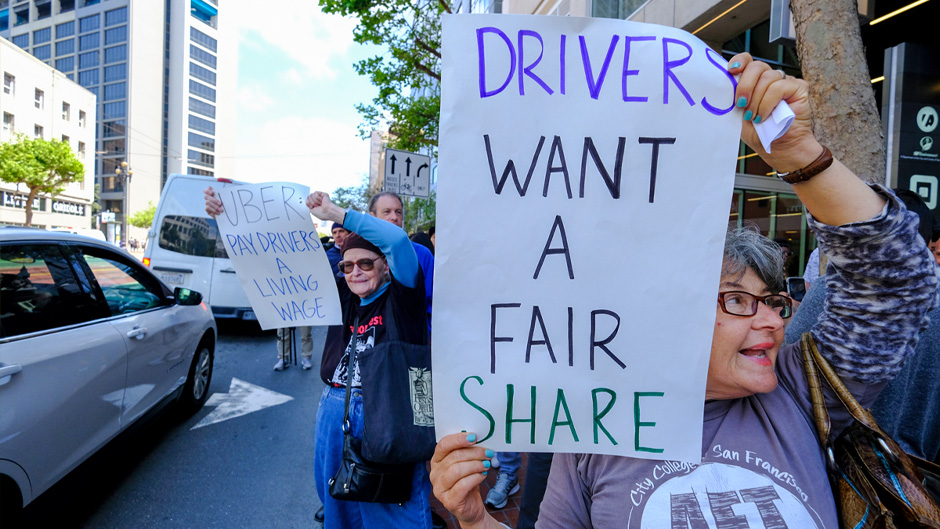The role of media to expose discrimination, workplace health, safety, or other violations has generally produced a desired outcome: the negative publicity prompts firms to take action to redress the issues to the benefit of the aggrieved employees.
Yet in the advancing Fourth Industrial Revolution, the current era characterized by rapid-fire technological advancement, the exposure of workplace improprieties or practices is increasingly prompting firms to invest more in AI as a long-term resolve that ultimately reduces the human workforce.
This unintended consequence of media exposure of labor-related issues is the subject of new recently published peer-reviewed research by the University of Miami Patti and Allan Herbert Business School team of alumnus Boshuo Li, who is now assistant professor of business administration at the University of Pittsburgh; Nina Huang, professor of business technology; and Wei Shi, management professor and Cesarano Faculty Scholar.
“Journalists play a critical role in society, and their goal in exposing these problems is to lead firms to take action to address them. Yet this coverage may motivate firms to invest in AI that can potentially replace employees and thus harm the interests of employees, especially if employees can’t upgrade their skills to catch up,” Shi said.
Shi contrasted the short-term, long-term response of firms when confronted with workforce violations.
“When workplace issues are brought to light, in the short term the firms may be forced to take action to address the problem,” he said. “But resolving them may be costly and so, in the long term, firms try to seek to replace labor with AI technology—which is not in the interests of employees at all.”
As a graduate student at the business school, Li, who has a longtime interest in the labor market, began to focus on how firms develop strategies to tackle today’s workforce challenges. His curiosity in this area catalyzed the research.
“As technologies like AI become more common in the workplace, companies are navigating a new mix of pressures and opportunities,” he said. “In this research, we wanted to understand how firms are using AI to address these labor challenges—and, in turn, what that means for jobs, skills, and firms' long-term performance.”
While the team looked across different industries, the findings that AI investment increased occurred particularly for white-collar, highly skilled tech jobs, explained Huang, whose research focuses on how digital technology can enhance user experiences. Automation previously primarily targeted blue-collar workers, she noted.
The researchers cited the case of International Business Machines Corporation (IBM) where media reports exposed wage and time violations and labor discrimination. In response, IBM significantly increased its investment in AI, notably its watsonx platform, to automate tasks traditionally performed by skilled professionals.
Similarly, Huang highlighted the cases of Uber and Tesla. Employees of the former pushed to unionize the company to secure better treatment of workers. The law and court battles that ensued in terms of how they classify their drivers prompted the ride-sharing platform to accelerate its investments in self-driving technology with the ultimate goal of replacing human drivers.
The implications that labor is seemingly squeezed in a “can’t win” scenario—first by the workplace grievances and violations and then, if those are exposed, the company will ultimately try to replace them—caused the researchers to ask what recourse workers have.
“Workers have to upgrade their skills to mitigate potential job displacement and also develop the skills necessary to work alongside the algorithms and collaborate with AI to increase productivity and AI synergy,” said Huang, referencing the assertion promoted in AI literature that when humans work together with the technology synergy increases.
Shi, whose research interest focuses on the influence of governance actors (e.g., boards, shareholders, and the media) on strategic decisions, noted that the trend is likely to continue due to the fierce competition for AI supremacy and for firms pressured to produce profits.
“If you imagine that your competitors have the technology—then you have to do the same to cut costs. Firms are driven by profits, and if adopting AI helps their profit, they will go for it. Because if they don’t, then their competitors will,” he said.
In addition to the research citations, Huang pointed to recent news reports substantiating the trend to reduce the white-collar workforce: U.S. technology giant Dell Technologies cutting its workforce, Microsoft laying off three percent of its workers, among others.
“It’s really alarming that these firms are cutting their workforce, and the stock market is rewarding them,” she said.
Both Huang and Shi emphasized that the responsibility lies with policymakers to enact policies that promote responsible AI development and labor protection for workers.
“It’s up to the policymakers to be aware that labor can be displaced. And if they don’t take this seriously, it could cause short-term social problems,” Shi said.
“These implications should be food for thought for us as educators to consider how we can best prepare our students for the future,” Huang said.
“Yet this evidence of job-killing should be very concerning for policymakers who are looking to strike a balance between responsible technology advancement and social welfare,” she added. “They need to consider how to make society a more human-friendly one.”

